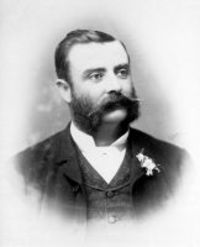William Pitt Architect
William Pitt (4 June 1855 – 25 May 1918) was an architect, public servant and politician working in Victoria, Australia, in the later part of the 19th century and early 20th century.Although some of his grandest buildings have since been demolished including the Melbourne Coffee Palace (1879) and the Federal Coffee Palace (1888), some examples of Pitt's architectural work remains today and he is still strongly associated with the boom era of Marvellous Melbourne.Pitt's roots were in the suburb of St Kilda, he lived, was educated there and lived there for some time and one of his finest contributions and surviving architectural works, the St Kilda Town Hall is one of the landmarks of the area (although his original vision for the building was never fully realised).Pitt began his own architectural practice in 1879 and he became highly sought after during the land boom in Melbourne, working almost solely in commercial architecture and becoming one of the a prolific proponent of eclecticism, in particular the Gothic revival and Second Empire styles of architecture. His legacy can be seen in grand commercial buildings lining Collins Street, Melbourne.Pitt was also renowned in Australasia as a specialist in theatre design, particularly in interiors with works in Melbourne, Ballarat, Sydney, Adelaide, Wellington and Auckland. Some declared him at the time to be the greatest theatre architect in Australia.
Search
Architect
| Significant building |
|---|
